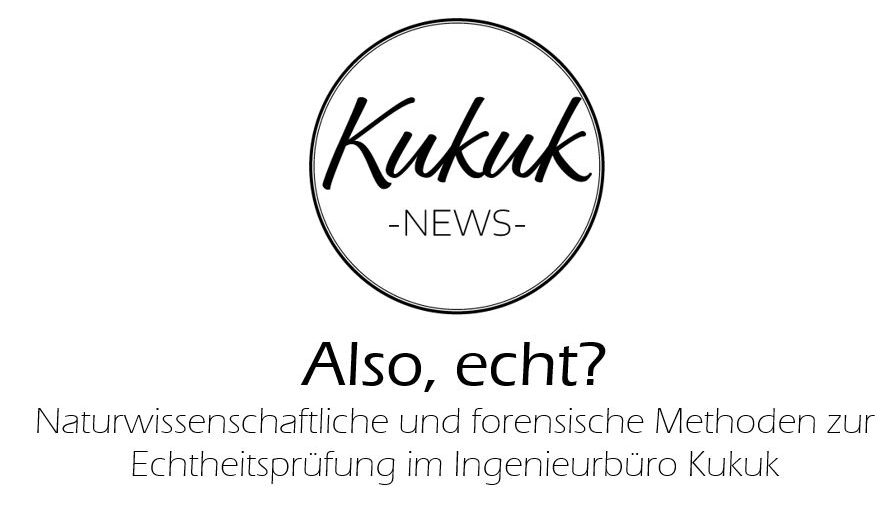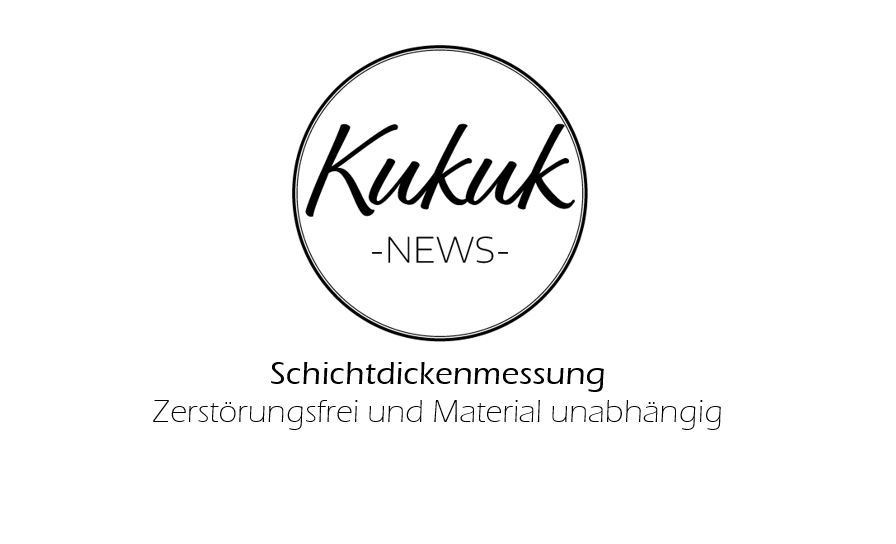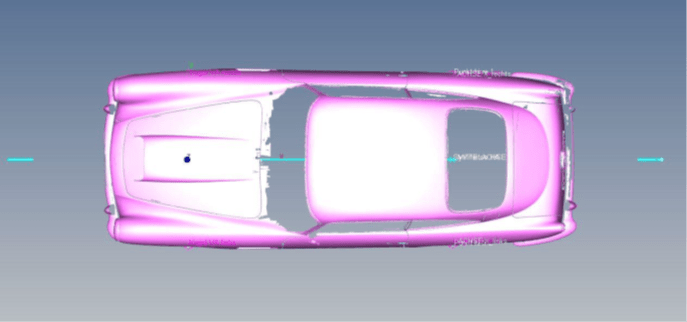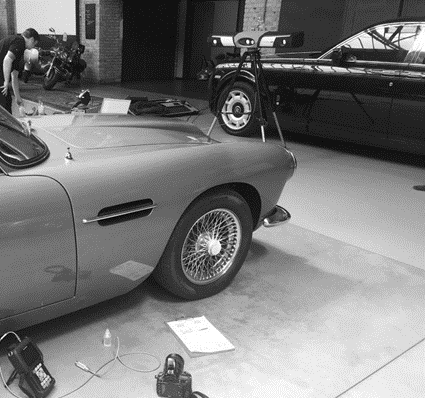An objective and detailed investigation is our top priority. To this end, various forensic and scientific methods are regularly used during our examinations so that we can incorporate objective, scientific findings into our expert opinions.
Does my GRP / CFRP body have a first coat of paint? In what condition are the aggregates? Are the chassis numbers original? Has the engine been properly and professionally overhauled? Are the tube dimensions on the frame in conformity with the manufacturer? Is the material "old" (body/frame) according to the era and therefore genuine? How original is my vehicle? What value does the condition reflect? Are the numbers of the embossed markings (engine, gearbox, chassis and body numbers) in conformity with the manufacturer's specifications?
Does my GRP / CFRP body have the first paint? What is the condition of the units? Is the embossing of the chassis number original? Has the engine been properly and professionally overhauled? Are the tube dimensions on the frame manufacturer-compliant? Is the material of the epoch "old" (body / frame) and therefore genuine? How original is my vehicle? What value does the condition reflect? The punch digits of the embossed markings (engine, transmission, chassis and body number) are these manufacturer-compliant?
In the following, we would like to present our various forensic and scientific methods for authenticating vehicles. Starting with the Spectroscopy, about Ultrasound, MRI, Oil Analysis, Lacquer layer thickness measurement, 3D scan and X-ray, Microscopy and our Motors Investigations.
In the following we would like to introduce our various forensic methods to authenticate vehicles for their originality. Starting off with spectroscopy, we move over to ultrasonic, the magneto optical method, oil analysis, paint thickness measurement, 3D scanning and x-ray, microscopy and our engine examinations.
1. Spectroscopy


Spectroscopy (optical emission spectroscopy, OEM) is used to determine the composition of the material, i.e. the elements that make up the material in percent. Subsequently, the age of the material, based on the elements and the manufacturing process, can be determined with an accuracy of up to a decade at best. Spectroscopy, as a forensic / scientific method of checking the authenticity of a vehicle, has been used in our engineering office since 1986. For 9 years now, we have been able to carry out the determination of the material composition, in the required quality / thousandths range, almost non-destructively and mobile. This means that we can carry out a corresponding investigation at any time, both nationally and internationally. To date, we have been able to expand our experience on the west and east coasts of North America, South America, Tokyo, Moscow, northern Italy, England, Belgium, the Netherlands, Switzerland and in Austria.
NOTE: You would like to use XRF? X-ray fluorescence is a method for analysing the elemental composition of materials. However, XRF has limitations in terms of the elements that can be measured... Optical Emission Spectroscopy (the spectroscopy we use and the only one that provides the information needed to be able to "date" the material) is an optical method that this can be used to detect almost all types of elements, especially those that are crucial for our analysis and "dating" -> XRF can NOT detect these elements! The information you get is not very helpful! The OEM is non-destructive and also portable, so there is absolutely no need for XRF, which then does not give you the information you need. So please be careful here!
Spectroscopy is used to determine the composition of the material, including the elements in percentage that make up the material. Following the analysis it is possible to determine the manufacturing process and the decade it was produced in. Further are able to compare the analysis with our data from the archive and make a statement regarding the originality of the material (e.g. frame, chassis, body...). Spectroscopy, as a forensic and scientific method of checking the authenticity of materials, has been used in our engineering office since 1988. For 9 years now, we have been able to determine the composition of materials on sight, at the car, not needing to send material into a stationary laboratory. Therefore we are able to analyse the material in an almost non invasive way at any time, any where in the world. To date, we have been travelling across the world to inspect many cars from UK, Italy, Switzerland, Netherlands, Belgium, Sweden, Norway, Denmark, Austria, Spain, Portugal, over North and South America, South Africa, Russia, Japan and China.
NOTE: You want to use XRF? X-ray fluorescence is a method to analyse the elemental composition of materials. However, XRF has limitations on the elements that can be measured... Optical Emission Spectroscopy (the spectroscopy we use and is the only one providing the information necessary in order to be able to "date" the material) is an optical method that can be used to detect almost all types of Elementes, especially those which are crucial for our analysis and "dating" -> the XRF can NOT detect these elements! The information you'll gain is not very helpful! The OEM is non-destructive and Portable too so absolutely no need for an XRF which then doesn't provide the Information needed - so please be careful here!
You can get an impression in the following video:
2. Ultrasound for coating thickness measurement of lacquer and metal


There are essentially 3 measuring methods to carry out non-destructive coating thickness measurements of, for example, frame material or car body sheet metal or paint thickness measurements on car bodies:
- The magnetic-inductive measuring method for measurements on ferritic substrates such as sheet metal
- The eddy current method for measurements on non-ferrous substrates such as aluminium
- Ultrasound for substrate-independent measurements or multilayer measurements.
The application of Ultrasound we use to determine the Material thickness, of both aluminium and steel sheet. We carry out this method regularly, especially in the body and frame area, and compare the values with the technical drawings of the vehicle manufacturer. The important thing here is that we can determine the sheet thickness without being disturbed by paint and filler build-up and, of course, non-invasively!
We can also determine the thickness of the paint layer or any type of material thickness. Ultrasound is used in particular for examining the paint thickness on GRP and CFRP, so we can also identify a first-paint vehicle here!
With the ultrasonic method, you are independent of the material in all cases! Layer thicknesses can also be measured on different substrates such as metals, plastics, wood or even GRP or CFRP! Furthermore, not only the total thickness, but also the individual layer thicknesses can be measured in only one measuring process - which is an enormous advantage compared to electromagnetic methods!
There are essentially 3 measuring methods to carry out non-destructive layer thickness measurements, for example of frame material or body sheet or paint thickness measurements on car bodies:
- The magnetic-inductive measuring method for measurements on ferritic substrates such as sheet metal
- The eddy current method for measurements on non-ferrous substrates such as aluminium
- Ultrasound for substrate-independent measurements or multi-layer measurements.
We use ultrasonic to determine the material thickness, including aluminium and steel sheet. In the body and frame area we use this method frequently to compare the material thicknesses with the technical drawings of the vehicle manufacturers. The important thing here is that we can measure the sheet metal skills without measuring lacquer, filler or other materials and of course in a non-invasive way! How does it work? The speed of sound of each material varies and therefore we can differentiate each material and measure the exact thickness using the speed of sound of the material in question, calibrating the ultrasonic machine and receiving a result in mm.
We can also determine the paint layer thickness or any type of material thickness. Ultrasound is used in particular to examine the thickness of the paintwork on glass and carbon fibre, so we can also identify a first paint vehicle here!
With the ultrasonic method you are material independent in all cases! It can also be layer thicknesses on different substrates such as metals, plastics, wood or GRP. Measure CFRP! In addition, not only the total thickness, but also the individual layer thicknesses can be measured in just one measuring process - which is an enormous advantage over electromagnetic methods!
You can get an impression in the following video:
3. Magneto Optical Method (MRI)

The Magneto Optical method largely replaces the Fry etching method and is based on a resonance process using magnetic energy and helps us to determine the Embossing markings on a vehicle. Hidden numbers, double strokes, grinding marks and much more can be examined, because the invisible is made visible.

The magneto-optical method is used to replace the Fry etching method, an invasive acid method, in order to be able to examine the stampings on the car in a non-destructive way which can be performed continuesly. This resonance method is using magnetic energy and helps us to have the embossed markings on a vehicle analysed for hidden digits, double taxes, grinding marks and more. The invisible is made visible
For almost 7 years we have been able to examine embossed markings on vehicles NON-INVASIVELY and in 95 % of the cases we have a meaningful result. Otherwise, we use the Fry etching method, which destructively allows us to determine further findings. An exciting method, despite the destruction! Here's an exciting case from early 2000 and the investigation of an "SSK" - check it out! We have also used this method here.
For almost 7 years we have been able to NON-INVASIVE examine the embossed markings on vehicles and in 95% of the cases we have a meaningful result. Otherwise we use the Fry etching method, which allows us to determine further knowledge in a destructive manner. An exciting method, despite the destruction! This way to an exciting case from the beginning of 2000 and the investigation of an "SSK" - have a look! We used this method here too.
A demonstration by the manufacturer of the method is available at www.youtube.com/watch?v=sWVYkdyP3sE to see.


4. Oil check analysis
The Oil analysis we carry out on aggregates such as the engine, gearbox and differential in order to get a better overview of the aggregate condition. The analysis results are informative and can, for example, be an indication that the head gasket needs to be changed or that there is bearing damage.
We perform an oil analysis on units such as the engine, transmission and differential in order to get a better overview of the state of the units. The analysis results are meaningful and can e.g. be an indication that the head gasket has to be replaced or that there is bearing damage.

Analysis of the engine oil sample:
On the left the values of a fresh oil sample and on the right the engine oil sample of the test vehicle:
Iron is strongly elevated, but copper and aluminium are also slightly elevated. Lead/copper typical bearing materials. Silicon is high and indicates dust/dirt, which has an abrasive effect and thus promotes wear. Potassium/sodium is also elevated, which can come from the coolant, as it is often used as an additive in the coolant. Fuel is slightly elevated and not the primary problem here.
Analysis of the engine oil sample:
On the left the values of a fresh oil sample and on the right the engine oil sample of the test vehicle:
Iron is greatly increased, but copper and aluminium are also slightly increased. Lead / copper typical bearing materials. Silicon is high and indicates dust / dirt, which has an abrasive and therefore wear-promoting effect. In addition, potassium/sodium increases what can come from the coolant, since it is often used as an additive in the coolant. Fuel is slightly increased and not the primary problem here.
You can get an impression in the following video:
5. Lacquer layer thickness measurement
By now a "must do" of every assessment! You get to know the car in detail in the superficial body area.
Using the latest technology, such as the application of ultrasound, we are able to carry out paint thickness measurements on aluminium and steel, but also on GRP and CFRP.
A "must do" for every expertise! You get to know the car in detail in the superficial body area and can detect potential hidden accidents, replacement panels etc.
Using state-of-the-art technology, such as the use of ultrasound, we are able to measure the paint film thickness on aluminium and steel, but also on GRP and CFRP.
6. 3D scanning, X-ray and 3D models
Originality examination of body and frame, verification of restoration / repair quality and damage assessment
- Originality examination by means of comparison of original photos and existing bodywork, frame ...
- Mobile use at any time and anywhere in the world
- Dimensioning, restoration support, 3D model for production of frame model / spare parts, etc.
- We have been using 3D scanners, 3D X-rays and 3D models regularly since 2005!
Originality examination of body and frame, restoration / repair quality and damage assessments
- Originality check by comparing original photos and the existing body, frame ...
- Mobile use anytime and anywhere in the world
- Dimensioning, restoration support, 3D model for the production of frame model / spare parts, etc.
- We have been using 3D scanners, 3D x-rays and 3D models regularly since 2005!
7. Electron scanning, macro and endoscopy
8. Engines investigation
Below are excerpts from our engine certificates as an example

















